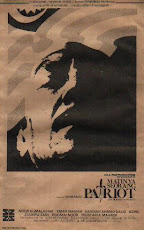#335. Changes in the Animated Film Industry
Animated films have been a part of our culture for just over 100 years. In 1906, a newspaper cartoonist named J. Stuart Blackton released the first fully animated film, “Humorous Phases of Funny Faces.” Since then, animation has used drawings and illustrations to entertain and delight many generations of viewers.
In the past decade, the animated film industry has seen a number of exciting changes. Computer Generated Imagery (CGI) is increasingly used, as well as using individual cells drawn by animators. Animated film budgets are also much higher than they once were. As a result, animated films are now receiving greater recognition and are not simply relegated to being kids’ films. Animation studios and their work are also garnering more attention because high-profile actors are doing voiceovers as opposed to relatively unknown actors.
During the first 90 years of animation and animated films, each cell of a film was drawn by animators. Any of the classic animated films by Disney, including “Snow White” or “Aladdin,” used this method. Hand drawn animation is still used in tandem with Computer-Generated Imagery (CGI). But, like everything else in our culture, animated films are advancing technologically, with CGI animation used for special effects. In 1995, “Toy Story” became the first feature-length animated film to use CGI.
Technology has raised the status of animated films, but star power has helped as well. When Disney’s “Aladdin” was released in 1992, it was one of the first feature-length animated films to feature the voice of a famous actor—Robin Williams as the Genie. Three years later, with the release of “Toy Story” viewers enjoyed being entertained by Tim Allen and Tom Hanks. This led to the phenomenon of other high-profile actors being cast in feature-length animated films.
Perhaps because they are making use of advanced technology and established actors, animated films are also more critically recognized than ever before. In 2002, the Academy of Motion Picture Arts and Sciences added the Best Animated Film category to the Oscar awards. “Shrek” was the first to win the award. But, this category came after a long wait by animation studios to have animation recognized as an artistically valid medium of filmmaking. Before the award was introduced, “Beauty and the Beast” was the only feature-length animated film to be nominated for Best Picture.
The addition of this category to the Academy Awards Ceremony in 2002 had an affect on animation overall and increased interest in the medium. As animated feature films rise in popularity, animation has become more accepted and can now be found in a wider range of television commercials and even films not in the animated category such as Richard Linklater’s “A Scanner Darkly.”
The movement extends even beyond Hollywood; advertisers, web designers and marketing firms are now using animation due to its wide appeal with audiences. It is not unheard of for a branding agency to have an in-house animation studio to take advantage of this popular medium. From the movie screen to your computer screen, animation is becoming more prevalent.
Technology and star power have contributed to the animation phenomenon, and animation—a genre that has its roots in children’s entertainment—is now more widespread and widely respected than ever before.
Article Source: ABC Article Directory
www.Moujaes.com—create brands, entertainment and experiences with the Moujaes animation studio







0 ulasan:
Catat Ulasan